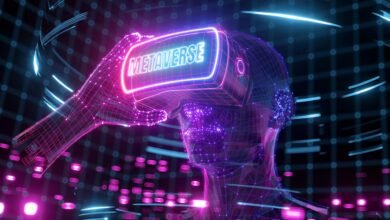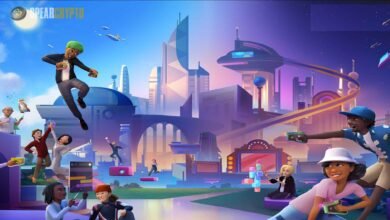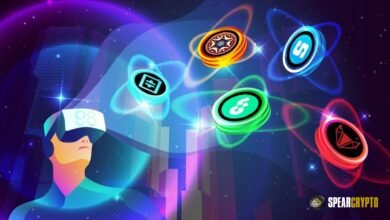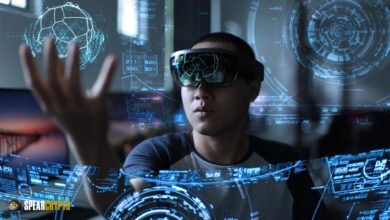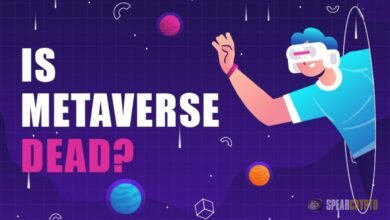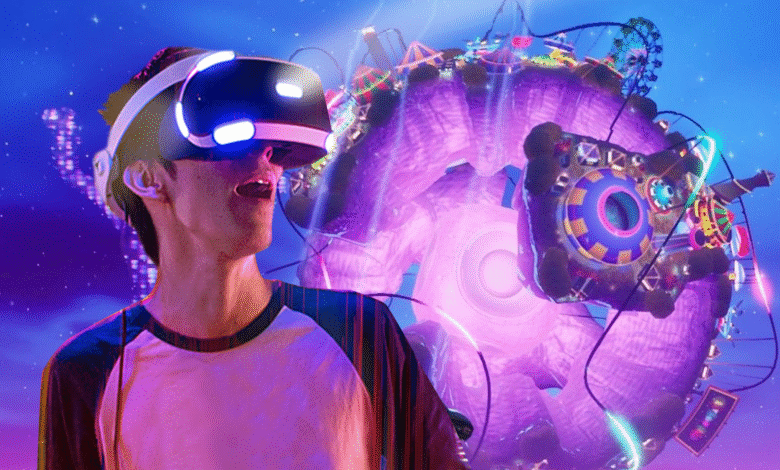
The digital landscape is rapidly evolving, and AI-powered metaverse avatar creation has emerged as one of the most exciting frontiers in virtual technology. As we navigate an increasingly connected world where digital interactions rival physical ones, the ability to create compelling, personalised avatars has become essential for businesses, content creators, and everyday users alike. This revolutionary technology combines artificial intelligence with advanced 3D modelling to generate virtual representations that are not only visually stunning but also deeply personalised to reflect individual characteristics, preferences, and brand identities.
What is AI-Powered Metaverse Avatar Creation?
AI-powered metaverse avatar creation represents a groundbreaking approach to generating digital personas using sophisticated artificial intelligence algorithms. Unlike traditional avatar creation methods that required extensive manual design work, AI-driven systems can analyse photographs, understand facial features, and automatically generate highly detailed 3D avatars in minutes rather than hours or days.
This technology leverages machine learning models trained on vast datasets of human faces, body types, and expressions to create avatars that closely resemble their real-world counterparts. The process involves complex neural networks that can interpret facial geometry, skin texture, hair patterns, and even subtle expressions to produce remarkably lifelike digital representations.
The integration of AI in avatar creation has democratized access to professional-quality virtual identities, making it possible for individuals and organisations without extensive technical expertise to create compelling digital personas for various metaverse platforms, virtual meetings, gaming environments, and social media applications.
The Technology Behind AI Avatar Generation
Advanced Neural Networks and Machine Learning
The foundation of AI-powered metaverse avatar creation lies in sophisticated neural networks, particularly Generative Adversarial Networks (GANs) and Variational Autoencoders (VAEs). These systems work by analysing thousands of facial features, body proportions, and stylistic elements to generate new avatar designs that maintain realistic proportions while offering creative flexibility.
Deep learning algorithms process input data such as photographs, written descriptions, or even voice characteristics to create avatars that reflect the user’s desired appearance and personality. The technology can extrapolate from limited input to generate full-body avatars complete with clothing, accessories, and environmental context.
Real-Time Rendering and Optimisation
Modern AI avatar creation systems incorporate real-time rendering capabilities that allow users to see their avatars in various environments and lighting conditions instantly. This technology ensures that avatars maintain visual consistency across different metaverse platforms and applications.
The optimisation algorithms built into these systems ensure that avatars remain functional across various hardware configurations, from high-end gaming computers to mobile devices, making AI-powered metaverse avatar creation accessible to a broader audience.
Benefits of AI-Powered Avatar Creation
Speed and Efficiency
Traditional avatar creation could take weeks or even months when working with skilled 3D artists. AI-powered systems reduce this timeline to minutes or hours, allowing users to iterate quickly and experiment with different designs without significant time investment.
Cost-Effectiveness
Professional avatar creation services can cost thousands of dollars, making them inaccessible to many individuals and small businesses. AI-powered metaverse avatar creation tools have dramatically reduced these costs, with many platforms offering high-quality avatar generation at a fraction of traditional prices.
Personalisation and Customisation
AI systems can analyse user preferences, social media profiles, and other data sources to create highly personalised avatars that reflect individual style and personality. This level of customisation ensures that each avatar is unique and meaningful to its creator.
Accessibility and Inclusivity
AI-powered tools have made avatar creation accessible to users with varying technical skills and artistic abilities. The technology also supports diverse representation, allowing users to create avatars that accurately reflect their identity, including different ethnicities, body types, and accessibility needs.
Also Read: Metaverse Codes: The Blueprint for the Next Digital Frontier
Popular AI Avatar Creation Platforms
![]()
Ready Player Me
Ready Player Me stands out as one of the most comprehensive AI-powered metaverse avatar creation platforms, offering seamless integration with numerous metaverse applications and games. The platform uses advanced AI to generate avatars from selfies, allowing users to create consistent digital identities across multiple virtual environments.
Loom.ai
Loom.ai specialises in creating photorealistic avatars using AI technology, focusing on maintaining facial accuracy and expression capabilities. Their platform is particularly popular among content creators and virtual meeting participants who require professional-quality avatars.
MetaHuman Creator
Developed by Epic Games, MetaHuman Creator represents the cutting edge of AI-powered avatar generation, offering film-quality digital humans with unprecedented detail and realism. While primarily designed for professional use, the platform demonstrates the potential future of avatar creation technology.
Virtual Avatar Creation Techniques
Photo-Based Generation
The most common approach to AI-powered metaverse avatar creation involves using photographs as input. Users upload one or more photos, and the AI system analyses facial features, proportions, and characteristics to generate a corresponding 3D avatar.
This technique works best with high-quality, well-lit photographs taken from multiple angles. The AI can interpolate between different views to create a comprehensive 3D model that captures the subject’s likeness accurately.
Text-to-Avatar Generation
Emerging AI systems can generate avatars based on written descriptions, allowing users to create digital personas without providing photographs. This approach is particularly useful for creating fictional characters or avatars that don’t directly resemble real people.
Style Transfer and Artistic Interpretation
AI algorithms can apply different artistic styles to avatar creation, allowing users to generate avatars in various aesthetic approaches, from realistic to cartoon-like, anime-inspired, or abstract artistic styles.
AI Avatar Generator Features
Facial Recognition and Mapping
Advanced AI systems can identify and map facial features with remarkable precision, ensuring that generated avatars maintain accurate proportions and recognisable characteristics. This technology extends beyond basic facial structure to include subtle details like skin texture, eye shape, and lip configuration.
Expression and Animation Capabilities
Modern AI-powered avatars include sophisticated expression systems that can convey emotions and facilitate natural communication in virtual environments. These systems often include real-time facial tracking that allows avatars to mirror the user’s expressions and gestures.
Clothing and Accessory Generation
AI systems can generate appropriate clothing and accessories for avatars based on user preferences, occasion requirements, or brand guidelines. This feature is particularly valuable for business users who need professional-looking avatars for virtual meetings and presentations.
Cross-Platform Compatibility
Leading AI avatar creation platforms ensure that generated avatars work seamlessly across different metaverse environments, gaming platforms, and virtual reality applications, providing users with consistent digital identities regardless of the specific platform they’re using.
Metaverse Character Design Best Practices
Understanding Your Target Audience
Successful metaverse character design begins with understanding the intended audience and use case. Business professionals require different avatar characteristics than gaming enthusiasts or social media users. Consider factors such as age demographics, cultural background, and platform-specific conventions.
Balancing Realism and Stylisation
While AI technology can create photorealistic avatars, the most effective designs often balance realism with stylization. This approach ensures that avatars remain visually appealing while maintaining good performance across different devices and platforms.
Consistency Across Platforms
Maintaining visual consistency across different metaverse platforms presents unique challenges. Successful avatar designs incorporate elements that translate well across various rendering engines and technical specifications.
Accessibility Considerations
Inclusive design principles should guide avatar creation, ensuring that avatars can represent diverse users accurately and respectfully. This includes considerations for different abilities, cultural backgrounds, and personal preferences.
Digital Avatar Technology Trends
Artificial Intelligence Advancement
The continuous improvement of AI algorithms promises even more sophisticated avatar creation capabilities. Future developments may include real-time personality analysis, automatic style adaptation, and enhanced emotional expression systems.
Virtual Reality Integration
As VR technology becomes more mainstream, AI-powered avatars will need to adapt to new interaction paradigms, including full-body tracking, haptic feedback, and spatial audio integration.
Blockchain and NFT Integration
The integration of blockchain technology with avatar creation opens new possibilities for avatar ownership, trading, and monetisation. Users may soon be able to create unique, verifiable digital identities that have real-world value.
Augmented Reality Applications
AI-powered avatars are expanding beyond traditional metaverse applications into augmented reality environments, allowing users to integrate their digital personas into real-world settings through mobile devices and AR glasses.
Business Applications of AI Avatar Creation
Virtual Meetings and Presentations
Professional organisations are increasingly adopting AI-powered avatars for virtual meetings, training sessions, and presentations. These avatars provide a more engaging alternative to traditional video conferencing while maintaining professional appearance standards.
Customer Service and Support
AI-powered avatars serve as virtual customer service representatives, providing 24/7 support with consistent brand representation. These systems can handle routine inquiries while maintaining a human-like interaction experience.
Marketing and Brand Representation
Brands are using AI-generated avatars as virtual spokespersons and brand ambassadors, creating consistent marketing personas that can be deployed across multiple platforms and campaigns.
Training and Education
Educational institutions and corporate training programs utilise AI avatars to create immersive learning experiences, allowing students to interact with virtual instructors and peers in realistic virtual environments.
Technical Requirements and Considerations
Hardware Specifications
Effective AI-powered metaverse avatar creation requires adequate computing resources, including sufficient RAM, processing power, and graphics capabilities. While cloud-based solutions reduce local hardware requirements, users should understand the technical specifications needed for optimal performance.
Software Compatibility
Different avatar creation platforms have varying compatibility requirements with operating systems, browsers, and metaverse applications. Users should verify compatibility before committing to specific platforms or tools.
Data Privacy and Security
Avatar creation often involves processing personal photographs and biometric data, raising important privacy and security considerations. Users should understand how their data is stored, processed, and protected by avatar creation platforms.
Future of Virtual Identity Creation
Emerging Technologies
The future of AI-powered metaverse avatar creation will likely incorporate emerging technologies such as quantum computing, advanced neural networks, and improved real-time rendering capabilities. These developments promise even more sophisticated and realistic avatar generation.
Integration with IoT and Wearables
Future avatar systems may integrate with Internet of Things devices and wearable technology to create avatars that reflect real-world activities, health metrics, and environmental conditions.
Personalised AI Assistants
AI-powered avatars may evolve into personalised digital assistants that can represent users across various virtual environments while maintaining consistent personality traits and preferences.
Challenges and Limitations
Technical Limitations
Current AI-powered avatar creation systems face technical challenges, including processing power requirements, rendering quality consistency, and cross-platform compatibility issues. These limitations continue to improve as technology advances.
Ethical Considerations
The ability to create realistic avatars raises ethical questions about identity representation, deepfake technology, and potential misuse. The industry continues to develop standards and best practices to address these concerns.
User Adoption Barriers
Despite technological advances, user adoption of AI-powered avatars faces barriers including technical complexity, cost considerations, and user comfort with digital identity representation.
Getting Started with AI Avatar Creation
Choosing the Right Platform
Selecting an appropriate AI avatar creation platform depends on factors such as intended use case, budget, technical requirements, and desired level of customisation. Users should evaluate multiple options before making a decision.
Preparation and Input Materials
Successful avatar creation requires proper preparation of input materials, including high-quality photographs, clear descriptions, and an understanding of intended use cases. Proper preparation significantly improves the quality of generated avatars.
Optimisation and Refinement
Most AI avatar creation platforms offer tools for optimising and refining generated avatars. Users should take advantage of these features to ensure their avatars meet specific requirements and preferences.
Conclusion
AI-powered metaverse avatar creation represents a transformative technology that is reshaping how we interact in digital spaces. As virtual environments become increasingly important for business, education, and social interaction, the ability to create compelling, personalized avatars has become essential for success in the digital realm.
The technology continues to evolve rapidly, with improvements in AI algorithms, rendering capabilities, and cross-platform compatibility making avatar creation more accessible and sophisticated than ever before. Whether you’re a business professional looking to enhance virtual presentations, a content creator building your digital brand, or an individual exploring new forms of digital expression, AI-powered avatar creation offers unprecedented opportunities for virtual identity development.
FAQs
How long does it take to create an AI-powered metaverse avatar?
Most AI-powered avatar creation platforms can generate basic avatars within 5-15 minutes, depending on the complexity and customisation level required. More sophisticated avatars with advanced features may take 30-60 minutes to process fully.
What type of photos work best for AI avatar generation?
High-resolution, well-lit photos taken from multiple angles work best for AI avatar generation. Front-facing portraits with clear facial features and minimal shadows provide optimal results. Avoid photos with heavy filters, extreme lighting, or obstructed facial features.
Can AI avatars be used across different metaverse platforms?
Many AI avatar creation platforms support cross-platform compatibility, allowing avatars to work across multiple metaverse environments. However, some platforms may have specific requirements or limitations that affect avatar appearance or functionality.
Are AI-generated avatars suitable for professional use?
Yes, modern AI-powered avatar creation tools can generate professional-quality avatars suitable for business meetings, presentations, and corporate communications. Many platforms offer specific features designed for professional use cases.
How much does AI-powered avatar creation cost?
Costs vary significantly depending on the platform and features required. Basic avatar creation may be free or cost $10-50, while advanced professional avatars can cost $100-500 or more. Subscription-based platforms often offer better value for regular users.

